Revelation Audio Labs Passage CryoSilver Reference DB25 Power Cable

DarqueKnight
Posts: 6,765
Introduction
I have sometimes wondered if the ordinary DB25 cables which connect the power supply and control chassis of my Pass Labs XP-25 phono preamp and XP-30 line level preamp were compromising performance. I recently found out that they were. A forum member (and Pass Labs XP-20 preamp owner) mentioned that he had achieved improved performance by replacing the stock DB25 with a Passage Cryo-Silver Reference umbilical power cable made by Revelation Audio Labs (Thanks Bluefox).
I asked Pass Labs if they had experimented with different DB25 cables. This was their response:
"We played with a few different DB25 cables but never noticed much of a difference. The only signals that travel over those cables are DC voltages and logic signals for the relays. I don't remember trying the cables you are looking at so who knows they may make a difference. This is audio and the only way to know for sure it to listen."
I was also curious about specific pin assignments and if all twenty-five pins were used. Here is the response and pin assignment chart I received:
"Here are the specific pins. Multiple Grounds + 8-10 volts for digital power and then left and right analog unregulated at about 40 volts. Pins 12 and 13 are shown jumpered as this is a PCB view. These are separate wires in the cable used for a loop back sense function to keep power off until both units are connected."

Figure 1. Pass Labs DB25 pin assignments for XP series preamps.
Construction Features
Deep cryogenic treated oxygen-free 99.999% (5n) ultra-pure solid core silver conductors. Each conductor hermetically sealed within its own oversized 100% pure virgin Teflon (PTFE) hollow air tube. Mil Spec Amphenol male-to-female DB-25 connectors and solid cast metal shielded shells. Multiple layers of heavy shielding, comprised of multiple layers of 5 mil solid copper, and Mil-Spec helical woven silver-plated stranded copper braid. Ceramic Micro-Spheres in cable conduit for micro-vibration abatement. Pre-conditioning on an Audiodharma Cable Cooker for 60 hours.
Price: $599 for 0.75 meter, $100 for each additional meter, 30-day audition with 20% restocking fee or 100% exchange credit, limited lifetime warranty.
I required three 1 meter cables, one for the XP-25 phono preamp and two for the XP-30 preamp. My cables arrived exactly three weeks after placing the order. They arrived in a well-padded box and were enclosed in a heavy velvet bag, with cable ends wrapped in bubble wrap. My pre-order and subsequent questions were always answered within 24 hours and most often within a matter of hours.
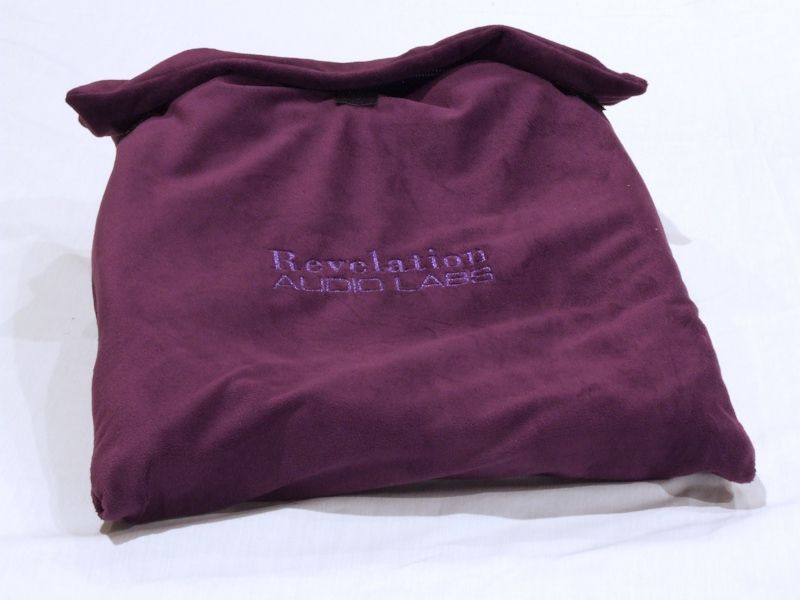
Figure 2. Fond of purple: RAL cable packaging.
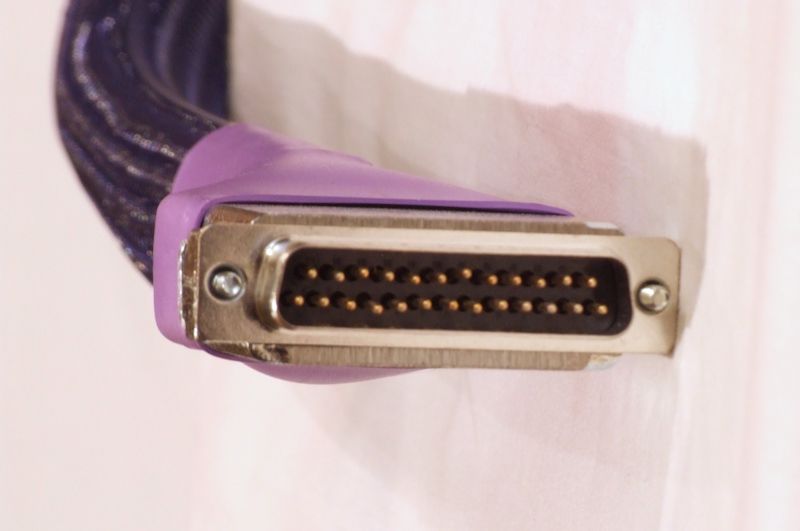
Figure 3. Misaligned pins of one cable end.
The pins of one of the cables were misaligned, probably due to bumping in shipment. They were gently pushed back into alignment with a small flat blade screwdriver. I suggested that the manufacturer use some type of plastic cap over the cable ends. The suggestion was well received. I purchased some DB25 end caps for 30 cents each.
Quantitative Analysis
The XP-30 is my third Pass line stage preamplifier. I went from the X1 to the X0.2 to the XP-30. I still have the short thicker DB25 cables that came with my X0.2, which had to be replaced with longer cables. I was curious if there was any measurable noise performance difference among the X0.2, XP-30, and RAL DB25 cables and there was.
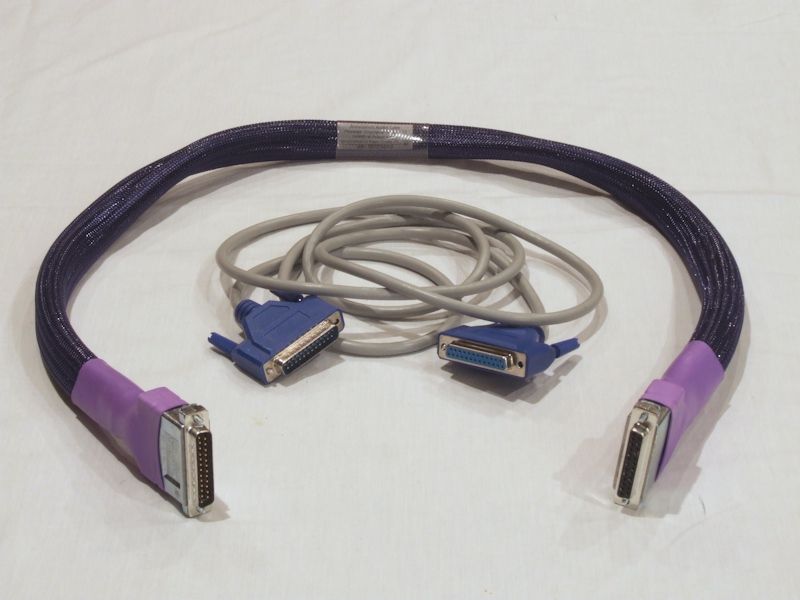
Figure 4. RAL DB25 and stock XP-25/XP-30 DB25 cables.
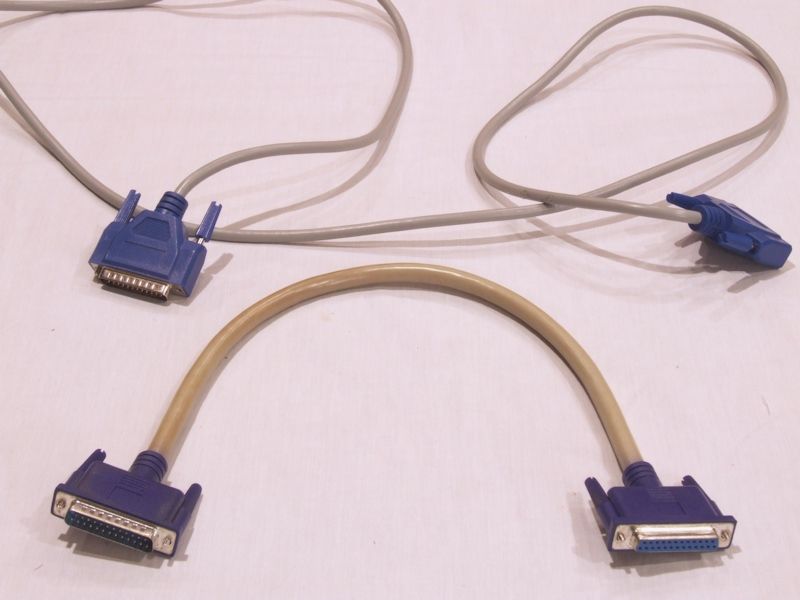
Figure 5. Stock X0.2 DB25 (bottom) and stock XP-25/XP-30 DB25 cables.
I made attachment fixtures from a spare DB25 cable in order to connect the cables to my Audiodharma Cable Cooker and use the Cooker's output signal as a test signal. Figures 7-9 show the results. All of the DB25 cables showed considerable ringing noise, but the RAL cable showed the smoothest and lowest amplitude ringing noise.

Figure 6. Cable Cooker output signal.
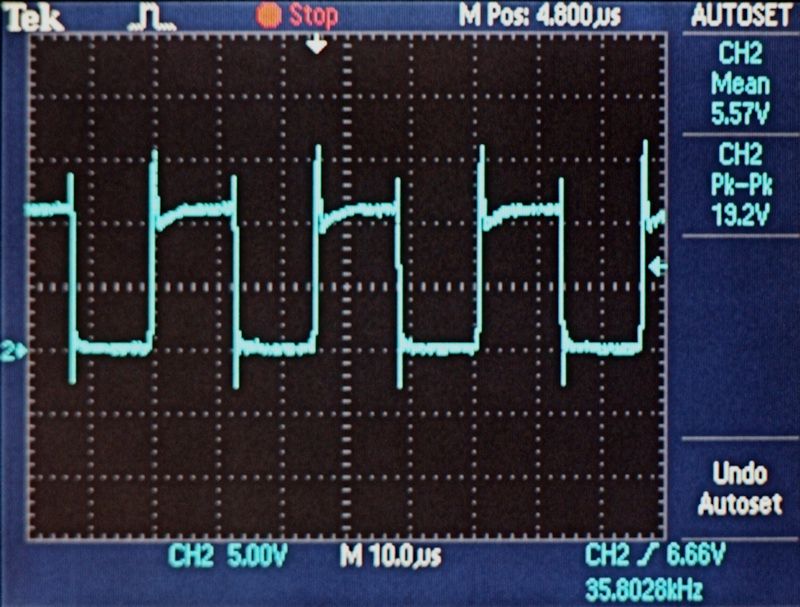
Figure 7. Cable Cooker output signal through the stock XP-25/Xp-30 DB25 cable.
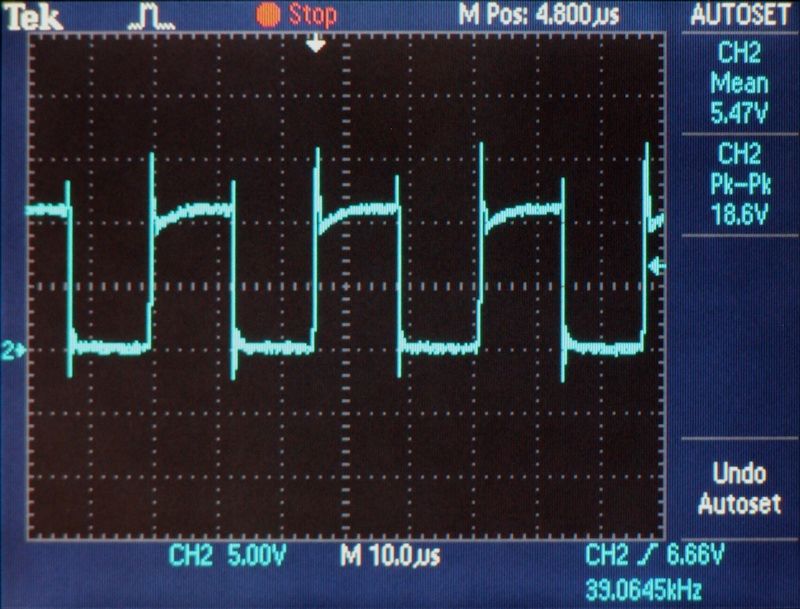
Figure 8. Cable Cooker output signal through the stock X0.2 DB25 cable.
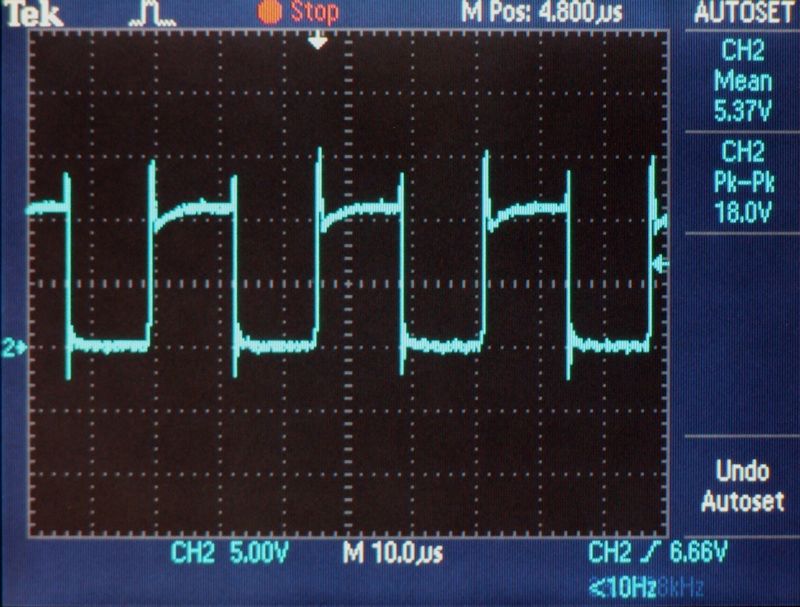
Figure 9. Cable Cooker output signal through the RAL Passage DB25 cable.
Installation Mission Impossible
The RAL DB25 cables are thick and stiff. I did not want to pull my 9,957 pound equipment cabinet from the wall, and I did not want to move my perfectly set up turntable and SACD player out of the way. That meant I had to lean over the cabinet from the center and work within the 5-3/8" space between the cabinet and the wall. That wasn't so difficult when working with the XP-30's connectors, since all the chassis were in a stack in the center of the cabinet. The XP-25's chassis were under the turntable and SACD player, therefore I had to contort a bit and lean over at an angle, all the while being careful not to bump anything. I tacked a hand mirror to the wall behind each Pass component's DB25 jacks and I used a headband LED light too see what I was doing. Things were further complicated by the tiny slot-head screws on the RAL connectors. The cables put up a good fight like a baby python, but I won.

Figure 10. Fond memories of wrestling my RAL DB25 cables into their new home.
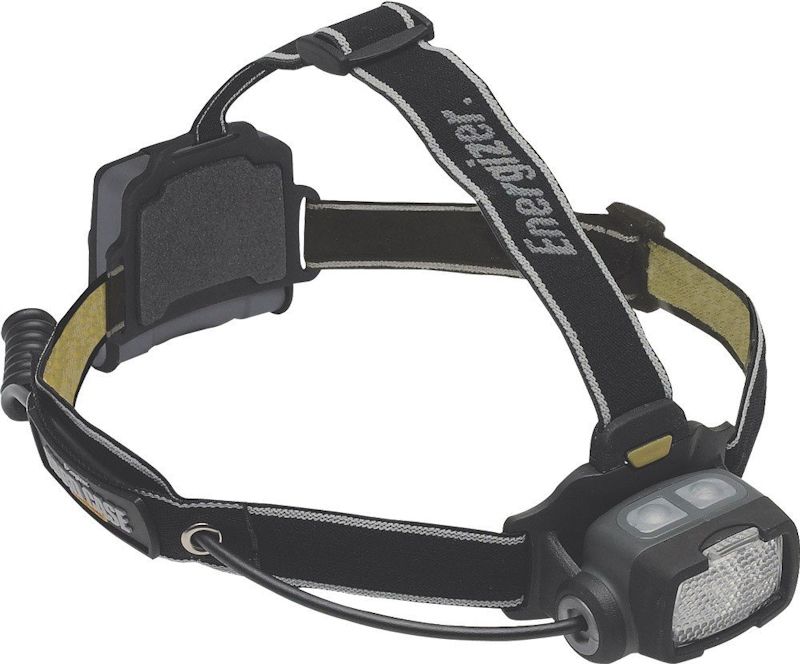
Figure 11. My LED headband light was an indispensable tool.
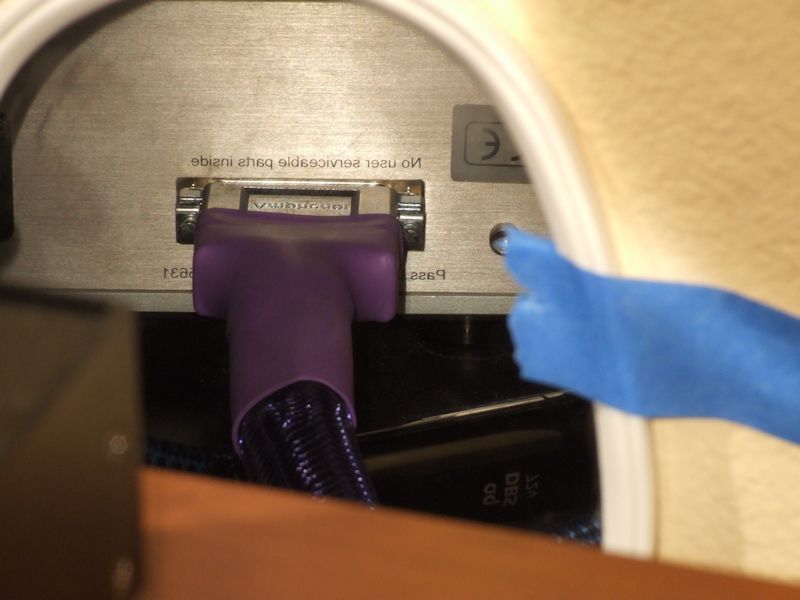
Figure 12. Part one of mission impossible completed! Five more to go.
The 1 meter length was just long enough to allow a comfortable bend radius of 5 inches at each end and a little bit of slack in the cable. In hindsight, a 1.25 meter length would have been easier to handle. I could have exchanged the cable for a longer length if I wanted. Foam blocks were placed under each connector for strain relief.
I have sometimes wondered if the ordinary DB25 cables which connect the power supply and control chassis of my Pass Labs XP-25 phono preamp and XP-30 line level preamp were compromising performance. I recently found out that they were. A forum member (and Pass Labs XP-20 preamp owner) mentioned that he had achieved improved performance by replacing the stock DB25 with a Passage Cryo-Silver Reference umbilical power cable made by Revelation Audio Labs (Thanks Bluefox).
I asked Pass Labs if they had experimented with different DB25 cables. This was their response:
"We played with a few different DB25 cables but never noticed much of a difference. The only signals that travel over those cables are DC voltages and logic signals for the relays. I don't remember trying the cables you are looking at so who knows they may make a difference. This is audio and the only way to know for sure it to listen."
I was also curious about specific pin assignments and if all twenty-five pins were used. Here is the response and pin assignment chart I received:
"Here are the specific pins. Multiple Grounds + 8-10 volts for digital power and then left and right analog unregulated at about 40 volts. Pins 12 and 13 are shown jumpered as this is a PCB view. These are separate wires in the cable used for a loop back sense function to keep power off until both units are connected."

Figure 1. Pass Labs DB25 pin assignments for XP series preamps.
Construction Features
Deep cryogenic treated oxygen-free 99.999% (5n) ultra-pure solid core silver conductors. Each conductor hermetically sealed within its own oversized 100% pure virgin Teflon (PTFE) hollow air tube. Mil Spec Amphenol male-to-female DB-25 connectors and solid cast metal shielded shells. Multiple layers of heavy shielding, comprised of multiple layers of 5 mil solid copper, and Mil-Spec helical woven silver-plated stranded copper braid. Ceramic Micro-Spheres in cable conduit for micro-vibration abatement. Pre-conditioning on an Audiodharma Cable Cooker for 60 hours.
Price: $599 for 0.75 meter, $100 for each additional meter, 30-day audition with 20% restocking fee or 100% exchange credit, limited lifetime warranty.
I required three 1 meter cables, one for the XP-25 phono preamp and two for the XP-30 preamp. My cables arrived exactly three weeks after placing the order. They arrived in a well-padded box and were enclosed in a heavy velvet bag, with cable ends wrapped in bubble wrap. My pre-order and subsequent questions were always answered within 24 hours and most often within a matter of hours.

Figure 2. Fond of purple: RAL cable packaging.

Figure 3. Misaligned pins of one cable end.
The pins of one of the cables were misaligned, probably due to bumping in shipment. They were gently pushed back into alignment with a small flat blade screwdriver. I suggested that the manufacturer use some type of plastic cap over the cable ends. The suggestion was well received. I purchased some DB25 end caps for 30 cents each.
Quantitative Analysis
The XP-30 is my third Pass line stage preamplifier. I went from the X1 to the X0.2 to the XP-30. I still have the short thicker DB25 cables that came with my X0.2, which had to be replaced with longer cables. I was curious if there was any measurable noise performance difference among the X0.2, XP-30, and RAL DB25 cables and there was.

Figure 4. RAL DB25 and stock XP-25/XP-30 DB25 cables.

Figure 5. Stock X0.2 DB25 (bottom) and stock XP-25/XP-30 DB25 cables.
I made attachment fixtures from a spare DB25 cable in order to connect the cables to my Audiodharma Cable Cooker and use the Cooker's output signal as a test signal. Figures 7-9 show the results. All of the DB25 cables showed considerable ringing noise, but the RAL cable showed the smoothest and lowest amplitude ringing noise.

Figure 6. Cable Cooker output signal.

Figure 7. Cable Cooker output signal through the stock XP-25/Xp-30 DB25 cable.

Figure 8. Cable Cooker output signal through the stock X0.2 DB25 cable.

Figure 9. Cable Cooker output signal through the RAL Passage DB25 cable.
Installation Mission Impossible
The RAL DB25 cables are thick and stiff. I did not want to pull my 9,957 pound equipment cabinet from the wall, and I did not want to move my perfectly set up turntable and SACD player out of the way. That meant I had to lean over the cabinet from the center and work within the 5-3/8" space between the cabinet and the wall. That wasn't so difficult when working with the XP-30's connectors, since all the chassis were in a stack in the center of the cabinet. The XP-25's chassis were under the turntable and SACD player, therefore I had to contort a bit and lean over at an angle, all the while being careful not to bump anything. I tacked a hand mirror to the wall behind each Pass component's DB25 jacks and I used a headband LED light too see what I was doing. Things were further complicated by the tiny slot-head screws on the RAL connectors. The cables put up a good fight like a baby python, but I won.

Figure 10. Fond memories of wrestling my RAL DB25 cables into their new home.

Figure 11. My LED headband light was an indispensable tool.

Figure 12. Part one of mission impossible completed! Five more to go.
The 1 meter length was just long enough to allow a comfortable bend radius of 5 inches at each end and a little bit of slack in the cable. In hindsight, a 1.25 meter length would have been easier to handle. I could have exchanged the cable for a longer length if I wanted. Foam blocks were placed under each connector for strain relief.
Proud and loyal citizen of the Digital Domain and Solid State Country!
Post edited by DarqueKnight on
Comments
-
Listening Tests
High quality stereo and mono recordings in CD, SACD, and LP formats were used in evaluations. LPs had been steam cleaned, then wet cleaned with a VPI 16.5 record cleaning machine, then stored in Mobile Fidelity anti-static record sleeves.
RAL recommends a break in time of 250 hours and that critical listening not be done until after the 250 hour break in period. I prefer to begin critical listening immediately and document sonic changes during the break in process. RAL preconditions their cables for 60 hours on an Audiodharma Cable Cooker. The Cable Cooker's manufacturer stated that one hour on the Cooker is roughly equivalent to three hours of playing time, therefore I needed to go another 70 hours to meet RAL's specification. However, I typically continue the break in process until I reach a 48 hour period with no sonic changes. My evaluation process spanned 150 hours, with no changes discerned after the listening session at the 96 hour point.
An RAL DB25 cable was first installed on the XP-25 phono preamp. Listening notes and sound stage image charts were first made with the stock DB25, then with the RAL DB25. Figure 13 shows the lateral sound stage chart for the 180 gram vinyl version of "Take Five" from Dave Brubeck's "Time Out" album. Before I listened to any music, I heard an improvement in one performance aspect. The close proximity of the XP-25's control chassis to an X600.5 power amplifier induces a faint hum. That hum appeared to be reduced by approximately half after the RAL DB25 cable was installed. There wouldn't be any hum at all if I placed the XP-25's control chassis on top of my equipment cabinet between the turntable and SACD player, but that option is not aesthetically pleasing.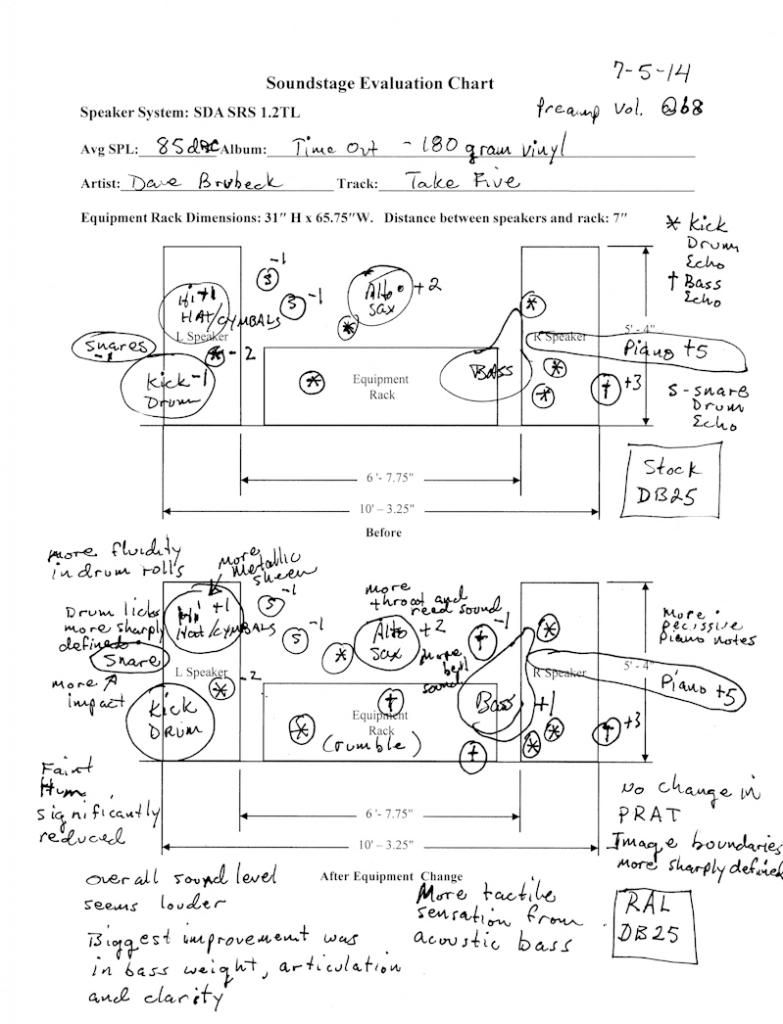
Figure 13. Lateral sound stage chart for "Take Five" 180 gram vinyl version. The +/- numbers indicate
in feet how far ahead or behind the speaker plane a sound image was localized.
Some of the differences immediately heard with the RAL DB25 cable were:
1. More rumble and growl texture to bass notes.
2. More tactile sensation from acoustic bass and low piano notes.
3. More image weight, definition and solidity.
4. More bass weight, articulation, and clarity.
5. More overall clarity.
6. Music sounded apparently (but not measurably louder) louder due to lower noise floor.
7. Larger and more defined ambient sounds.
I usually go back and forth several times between an old and new cable, but I only "fell back" once in this case because
1. The differences were so striking.
2. My mind could not come to terms with bending over and reaching behind my equipment cabinet multiple times and dealing with the baby python, even though handling was easier the second time around because the cable had been bent into shape.
Going back to the stock DB25 took away the increased image weight, enhanced ambient sounds, additional detail, and bass enhancements. The XP-25's RAL DB25 was reinstalled, permanently, and an RAL DB25 was then installed between the XP-30's control chassis and the right channel amplification chassis. There was an increase in image weight and apparent loudness on the right.
Next, leaving the RAL DB25 only on the right, I switched to the SACD version of "Take Five" and was bitterly disappointed. I was shocked that Such Good Sound had disappeared like a thief in the night. The right side still sounded louder, but lacked in detail and clarity compared to the (stock) left side. There was also a shift of the center image to the left. In other words, the analog source sounded better on the right whereas the digital source sounded worse. I first thought the RAL cables were "overcooked", but I realized that, if that were the case, things would have sounded bad with the analog source too. I assumed that there was some electronic "imbalance" the SACD player was sensitive to and that the situation would improve by installing the XP-30's left side RAL cable. The sound did improve for the turntable, but it became much worse for the SACD player, as shown in figure 14. With both RAL DB25 cables on the XP-30, the sound stage almost collapsed when listening to the SACD player, yet the turntable was exhibiting a new fullness of life.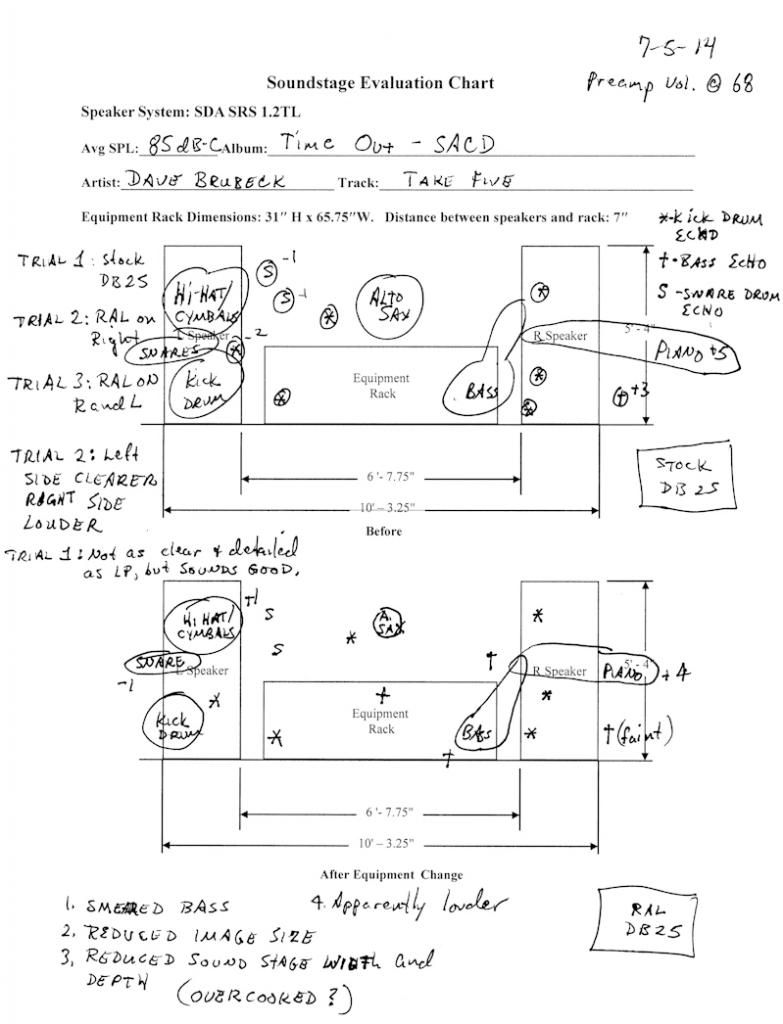
Figure 14. Lateral sound stage chart for "Take Five" SACD version. The +/- numbers indicate
in feet how far ahead or behind the speaker plane a sound image was localized.
The sonic aberrations I was hearing with the SACD player were just like the ones I had heard previously when I had overcooked cables. However, I don't recall a case where things sounded "overcooked" with one source and sounded great with another. After 36 hours, the SACD player was back to normal, but not improved sound. With the SACD player, I began hearing some of the improvements heard on the analog side after the 36 hour mark.
At the 72 hour mark, I did an A/B comparison of the vinyl and SACD versions of "Take Five" by pausing the SACD version on one of the initial beats, starting the record version and restarting the SACD version when the record caught up. The image sizes, image placement, and overall sound level were identical. The record had more bass weight, bass detail, and bass articulation. There was also a bit of sibilance on the cymbals and some saxophone notes.
At the 96 hour mark, the sibilance was gone. At this A/B comparison of the vinyl and SACD versions of "Take Five", the SACD had more bass weight, bass detail and articulation. The SACD also had more high frequency detail and better ambient information presentation. Cymbals had more shimmer, decay, and detail.
I did not hear further changes, on any recordings, at the 120 hour and 150 hour listening sessions.
Figure 15. Two channel system listening room. I often use Dave Brubeck's "Time Out" album for equipment
evaluations because of the recording clarity, life size (on my system) images, and sound stage width. The
drum set is placed on the left, in front of and extending leftward of the left speaker. The saxophone is in the
center and projected forward of the speaker plane. The acoustic bass is just to the left of the right speaker.
The piano extends from the right speaker to behind the chair at the right.
Referring to figure 15, on Sheila E's "Writes of Passage" CD, there is an intro track called "TrainAComin'", which is the sound of a train moving from left to right. Normally, I hear the train begin at the left wall, move to the right just under the tops of the speakers, and end at the archway door. During the "crushed sound stage" episode, the train began in the middle of the left speaker, moved to the right along the top of the equipment cabinet, and stopped at the middle of the right speaker.Proud and loyal citizen of the Digital Domain and Solid State Country! -
Prior XP-30 and XP-25 Tweaks
The following prior tweaks were performed on both the XP-30 and XP-25:
1. Chassis lined with Dynamat Xtreme vibration abatement foil.
2. Stock power line fuse replaced with a HiFi Tuning Supreme audio grade fuse.
3. Stock power cord replaced with a PS Audio AC 12 power cord.
The RAL Passage Cryo DB25 power cords provided the most significant sonic improvement of any tweak to date. The price of the RAL cords was very reasonable considering their quality and performance and considering their prices were only 6.6% and 8.5% of retail prices of the XP-25 and XP-30 preamps.
Power infrastructure Summary
Stable and clean AC power is the foundation of good stereo sound. My two channel stereo system is fed by three dedicated 20 amp AC circuits, each terminated with a PS Audio Soloist Premier SE passive in-wall power conditioner and a QuietLine high frequency noise filter. Each component is fed by a PS Audio AC-12 power cord. The power amplifiers are plugged into the Soloists. The source components are plugged into a PS Audio P10 AC regenerator. All fused components, except for the turntable motor power supply, had the stock fuses replaced with audio grade HiFi Tuning Supreme fuses. The turntable motor power supply has a HiFi Tuning Gold fuse. I did not hear or measure a performance difference between the Gold and Supreme fuses in that application. The source components receive additional power filtration and mechanical noise abatement from a PS Audio PowerBase.
Further Study
It is fascinating how this cable upgrade provided an immediate and continual improvement to a pure analog signal, but the reconstituted analog signal from a digital source was initially severely compromised. In the future, when I am more dedicated to audio than I am now, I will seek scientific answers to this mystery.
References
Two Channel Audio System Equipment List And Photos
Revelation Audio Passage CryoSilver Reference DB-25-Power Cable Review - (Martin T) Art of Sound Forum
Revelation Audio Passage CryoSilver Reference DB-25 Power Cable For Pass XP-20 Preamp Review - (Bluefox) Polk Audio Forum
Pass Labs XP-30 Line Level Preamplifier Review
Pass Labs XP-25 Phono Stage Review
PS Audio PerfectWave AC-12 Power Cord Review
Vibration Abatement For The Pass Labs X600.5 Power Amp and XP-30 And XP-25 Preamps
A Comparison Of The SACD, CD, and LP Versions Of Six TitlesProud and loyal citizen of the Digital Domain and Solid State Country! -

DK, that is beautiful!_____________________________________________________________________________________________
Ethernet Filter: GigaFOILv4 with Keces P3 LPS
Source: Roon via ethernet to DAC interface
DAC: Bricasti M1SE
Pre/Pro: Marantz AV8805
Tube Preamp Buffer: Tortuga TPB.V1
Amp1: Nord One NC1200DM Signature, Amp2: W4S MC-5, AMP3: W4S MMC-7
Front: Salk SoundScape 8's, Center: Salk SoundScape C7
Surround: Polk FXIA6, Surround Back: Polk RTIA9, Atmos: Polk 70-RT
Subs: 2 - Rythmik F25's
IC & Speaker Cables: Acoustic Zen, Wireworld, Signal Cable
Power Cables: Acoustic Zen, Wireworld, PS Audio
Room Treatments: GIK Acoustics -
Nice. I don't know how I missed this. Sometimes it seems new posts disappear from 'new posts' even if you never read it.
Anyway, I'm glad they worked for you. I just use my ears and memory for evaluation, and I am relieved your measurements and experience parallel my experience. I'm also glad I only had to use one .75 meter cable versus three 1 meter cables.
Is this a typo?The RAL DB25 cables are thick and stiff. I did not want to pull my 9,957 pound equipment cabinet from the wall,Lumin X1 file player, Westminster Labs interconnect cable
Sony XA-5400ES SACD; Pass XP-22 pre; X600.5 amps
Magico S5 MKII Mcast Rose speakers; SPOD spikes
Shunyata Triton v3/Typhon QR on source, Denali 2000 (2) on amps
Shunyata Sigma XLR analog ICs, Sigma speaker cables
Shunyata Sigma HC (2), Sigma Analog, Sigma Digital, Z Anaconda (3) power cables
Mapleshade Samson V.3 four shelf solid maple rack, Micropoint brass footers
Three 20 amp circuits. -
Now THATS a post!......my pee pee shrunk up a bit. Enjoyable read and far above my pay grade, but made some sense
-
I'm also glad I only had to use one .75 meter cable versus three 1 meter cables.

Yeah, the rabbit hole can be economically challenging at times.Is this a typo?The RAL DB25 cables are thick and stiff. I did not want to pull my 9,957 pound equipment cabinet from the wall,
It was an exaggeration to emphasize how much I hate pulling my heavy equipment cabinet away from the wall. The cabinet and gear actually weigh 785 pounds.Proud and loyal citizen of the Digital Domain and Solid State Country! -
Somehow, I got the hyperbole in the "9,957" number. I guess I've been reading too many posts!
Thank you for another exemplary post.
DarqueKnight, when are you going to get more committed to two-channel sound systems? :~)Family Room, Innuos Statement streamer (Roon Core) with Morrow Audio USB cable to McIntosh MC 2700 pre with DC2 Digital Audio Module; AQ Sky XLRs to CAT 600.2 dualmono amp, Morrow Elite Speaker Cables to NOLA Baby Grand Reference Gold 3 speakers. Power source for all components: Silver Circle Audio Pure Power One with dedicated 20 amp circuit to main panel.
Exercise Room, Innuos Streamer via Cat 6 cable connection to PS Audio PerfectWave MkII DAC w/Bridge II, AQ King Cobra RCAs to Perreaux PMF3150 amp (fully restored and upgraded by Jeffrey Jackson, Precision Audio Labs), Supra Rondo 4x2.5 Speaker Cables to SDA 1Cs (Vr3 Mods Xovers and other mods.), Dreadnaught with Supra Rondo 4x2.5 interconnect cables by Vr3 Mods. Power for each component from dedicated 20 amp circuit to main panel, except Innuos Statement powered from Silver Circle Audio Pure Power One. -
It appears either pin 1 or 2 isn't used. Is that correct, or is the diagram ambiguous? If ambiguous I can just imagine somebody making an incorrectly wired cable. :eek:Lumin X1 file player, Westminster Labs interconnect cable
Sony XA-5400ES SACD; Pass XP-22 pre; X600.5 amps
Magico S5 MKII Mcast Rose speakers; SPOD spikes
Shunyata Triton v3/Typhon QR on source, Denali 2000 (2) on amps
Shunyata Sigma XLR analog ICs, Sigma speaker cables
Shunyata Sigma HC (2), Sigma Analog, Sigma Digital, Z Anaconda (3) power cables
Mapleshade Samson V.3 four shelf solid maple rack, Micropoint brass footers
Three 20 amp circuits. -
It appears either pin 1 or 2 isn't used. Is that correct, or is the diagram ambiguous? If ambiguous I can just imagine somebody making an incorrectly wired cable. :eek:
Pin 1 is one of the left voltage + connections. Pins 2 and 3 are jumpered together and are one of the left voltage - connections.Proud and loyal citizen of the Digital Domain and Solid State Country! -
Have you noticed any further improvements? I have become used to mine and am starting to wonder where to get my next fix.

I am now putting my effort into bringing up my HT/surround/spare stereo up a level.Lumin X1 file player, Westminster Labs interconnect cable
Sony XA-5400ES SACD; Pass XP-22 pre; X600.5 amps
Magico S5 MKII Mcast Rose speakers; SPOD spikes
Shunyata Triton v3/Typhon QR on source, Denali 2000 (2) on amps
Shunyata Sigma XLR analog ICs, Sigma speaker cables
Shunyata Sigma HC (2), Sigma Analog, Sigma Digital, Z Anaconda (3) power cables
Mapleshade Samson V.3 four shelf solid maple rack, Micropoint brass footers
Three 20 amp circuits. -
I haven't heard any further improvements.Proud and loyal citizen of the Digital Domain and Solid State Country!
-

Taken from a recent Audioholics reply regarding "Club Polk" and Polk speakers:
"I'm yet to hear a Polk speaker that merits more than a sentence and 60 seconds discussion."
My response is: If you need 60 seconds to respond in one sentence, you probably should't be evaluating Polk speakers.....
"Green leaves reveal the heart spoken Khatru"- Jon Anderson
"Have A Little Faith! And Everything You'll Face, Will Jump From Out Right On Into Place! Yeah! Take A Little Time! And Everything You'll Find, Will Move From Gloom Right On Into Shine!"- Arthur Lee




